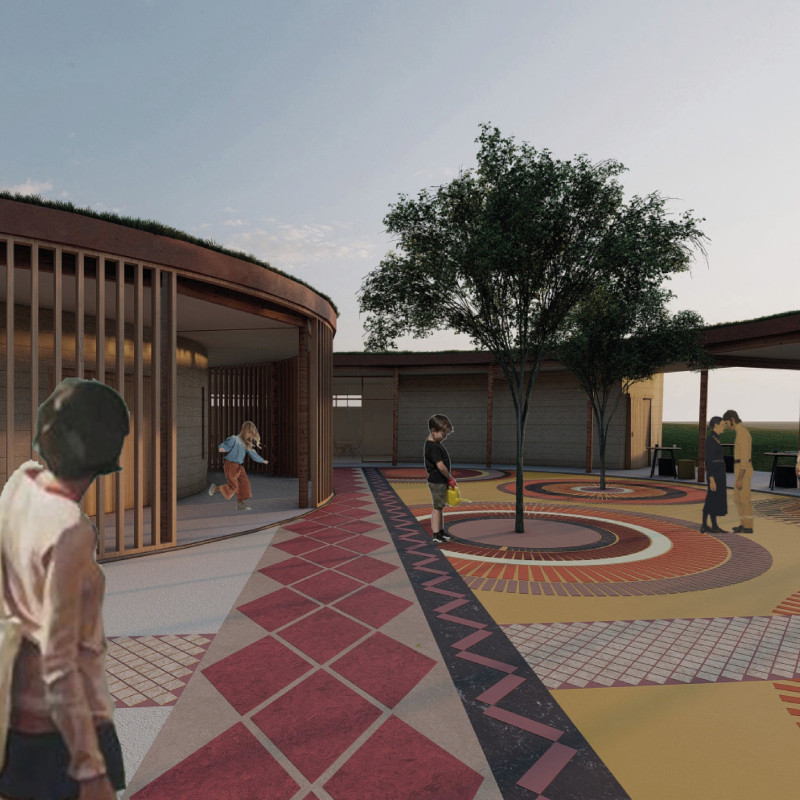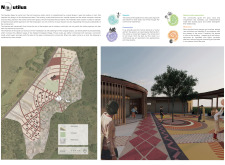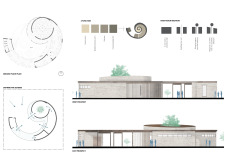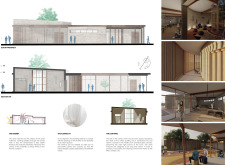5 key facts about this project
The project significantly emphasizes sustainability. It utilizes materials like corten steel, wood, recycled components, and natural insulation to minimize environmental impact. The materials were selected not only for their durability but also for their aesthetic quality, allowing the building to blend harmoniously with its surroundings.
Architectural Elements and Unique Features
A central aspect of the Nautilus project is its unique spiral design, which acts both as a conceptual and functional element. This geometry allows for an organic flow of movement throughout the space. Natural light is maximized through strategically placed large windows and a central skylight, enhancing the mood and energy within the interior.
The design incorporates a tree at the heart of the central space, symbolizing life and fostering a sense of stability within the architecture. This element serves as a visual anchor while providing natural shade. The adaptability of interiors is another innovative approach—removable panels and partitions allow for an easy reconfiguration of space, accommodating a range of activities from gatherings to individual uses.
The flooring design deserves attention as well. It includes engaging mosaics crafted from recycled materials, which reflect the local ecosystem and contribute to the building's narrative. This not only supports sustainability but also creates a visually stimulating environment.
Sustainable Integration and Community Focus
The Nautilus project emphasizes an ecological ethos by placing it within a context rich in agricultural land and wilderness areas. This location enhances the potential for community engagement and promotes a self-sustaining ecosystem, integrating human activity with nature. The multifunctional spaces serve different community needs, increasing accessibility and encouraging usage by various groups.
The overall design fosters an environment conducive to collaboration and interaction, reinforcing the idea that architecture can enhance social connectivity. The careful planning and execution of Nautilus demonstrate how innovative architectural ideas can create spaces that are not only functional but also meaningful, reflecting the values and needs of the community.
For deeper insights into this project, including architectural plans, sections, and designs, readers are encouraged to review further details regarding Nautilus. Exploring these elements will provide a comprehensive understanding of the architectural concepts and practical applications presented in this project.


























